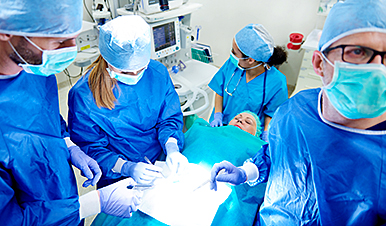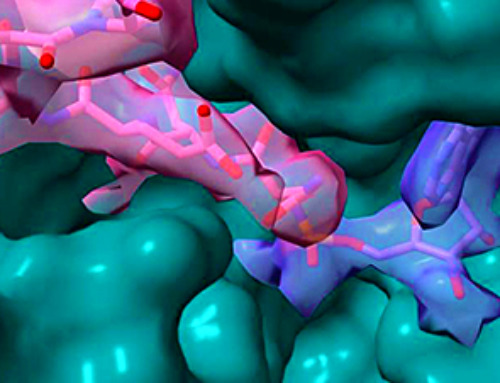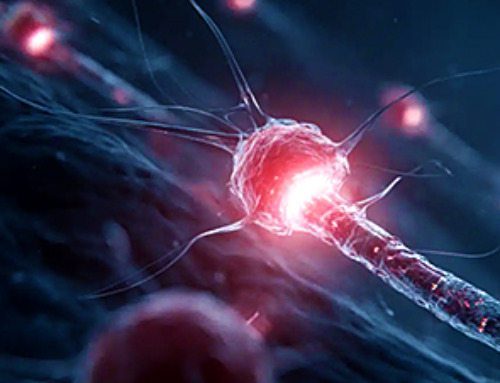| A nanotechnology-based drug delivery system developed at UVA Health to save patients from repeated surgeries has proved to have unexpectedly long-lasting benefits in lab tests – a promising sign for its potential to help human patients. | |
| The approach would allow surgeons to apply a paste of nanoparticles containing hydrogel on transplanted veins to prevent the formation of harmful blockages inside the veins. These blockages often force heart and dialysis patients to undergo repeated surgeries; some dialysis patients need seemingly endless procedures on both arms and then a leg or around their collarbone so that they can continue to receive their lifesaving treatment. | |
| The researchers have published their findings in the scientific journal Bioactive Materials (“Nano-based perivascular intervention sustains a nine-month long-term suppression of intimal hyperplasia in vein grafts”). | |
| While UVA’s innovation, dubbed “Pericelle,” produced encouraging results in early testing, there have been questions about how long the benefits this form of drug delivery could last. Would this quick and easy procedure, performed during the initial vein surgery, continue to protect patients months later? That was the hope, but even the UVA scientists were surprised by their latest results: Not only did Pericelle work at three months – when the applied drug supply ran out – but it continued to work at six months and was still working at nine months. | |
| The scientists can’t fully explain the unexpectedly durable benefits. But they are excited about what it suggests for the potential of their technique. | |
| “This is a big deal because the treatment could work much longer than we originally thought, far beyond what people would expect,” said researcher Lian-Wang Guo, PhD, who is developing the technique with UVA’s K. Craig Kent, MD. “It is so exciting that one treatment can prevent the harmful blockages for many months.” | |
A $5 Billion Healthcare Drain |
|
| Kent, a vascular surgeon who also leads UVA Health, is well acquainted with the challenges associated with “revascularization” procedures. These procedures are used to treat cardiovascular disease by restoring needed blood flow – for example, a surgeon might move a vein from the leg to the heart for patients with heart failure. | |
| The procedure is also used to create access points for patients who need dialysis. An artery and vein in the arm, for example, are often grafted together so that a patient’s blood can be removed from the body, cleansed and then returned. These dialysis connection points are called “arteriovenous fistulas,” or AVFs, and management of them in patients with end-stage renal disease is estimated to cost the U.S. healthcare system $5 billion every year. | |
| The problem is that revascularizations often cause the very problem they’re trying to fix: inadequate blood flow. The surgery itself causes a buildup of cells in the blood vessels that chokes off the blood supply. | |
| “Repeated surgeries for vascular access and revascularization are not just a major burden for patients – they represent an urgent, unmet need in medicine,” said Kent, UVA Health’s chief executive officer and UVA’s executive vice president for health affairs. “The strain on patients’ lives and the healthcare system is immense, and innovative solutions like Pericelle offer an opportunity to change this paradigm. We desperately need alternatives that can deliver durable, long-term results.” | |
| Kent, Guo and their collaborator Shaoqin Gong, PhD, at the University of Wisconsin-Madison, hope Pericelle could be the answer. Surgeons would apply the hydrogel paste on blood vessels to deliver a drug, rapamycin, that can prevent the growth of invasive cells. | |
| The UVA scientists had hoped that the results of their latest research would defy conventional wisdom and show that the drug would have benefits even after the applied supply ran out in three months. Six months, they thought, would be great; but they were wowed to see it still working in lab rats at nine months. | |
| While much more research will need to be done before the approach could be made available to patients, the scientists are encouraged by their latest milestone and optimistic about what lies ahead. This type of cutting-edge nanotechnology research will be a key pillar of UVA’s Paul and Diane Manning Institute of Biotechnology, now under construction at Fontaine Research Park in Charlottesville. | |
| “If we can find a way to prevent the need for repeated surgeries, it will have a huge impact on patients’ lives,” said Guo, of the School of Medicine’s Department of Surgery and the Robert M. Berne Cardiovascular Research Center. | |
| In parallel with their work on Pericelle, Guo and Kent are also developing another surgery-saving approach, called “epiNanopaint,” that would let surgeons “paint” nanoparticles on veins to prevent the veins from becoming clogged in the future. |
| Source: University of Virginia Health System (Note: Content may be edited for style and length) |
News
Team finds flawed data in recent study relevant to coronavirus antiviral development
The COVID pandemic illustrated how urgently we need antiviral medications capable of treating coronavirus infections. To aid this effort, researchers quickly homed in on part of SARS-CoV-2's molecular structure known as the NiRAN domain—an [...]
Drug-Coated Neural Implants Reduce Immune Rejection
Summary: A new study shows that coating neural prosthetic implants with the anti-inflammatory drug dexamethasone helps reduce the body’s immune response and scar tissue formation. This strategy enhances the long-term performance and stability of electrodes [...]
Scientists discover cancer-fighting bacteria that ‘soak up’ forever chemicals in the body
A family of healthy bacteria may help 'soak up' toxic forever chemicals in the body, warding off their cancerous effects. Forever chemicals, also known as PFAS (per- and polyfluoroalkyl substances), are toxic chemicals that [...]
Johns Hopkins Researchers Uncover a New Way To Kill Cancer Cells
A new study reveals that blocking ribosomal RNA production rewires cancer cell behavior and could help treat genetically unstable tumors. Researchers at the Johns Hopkins Kimmel Cancer Center and the Department of Radiation Oncology and Molecular [...]
AI matches doctors in mapping lung tumors for radiation therapy
In radiation therapy, precision can save lives. Oncologists must carefully map the size and location of a tumor before delivering high-dose radiation to destroy cancer cells while sparing healthy tissue. But this process, called [...]
Scientists Finally “See” Key Protein That Controls Inflammation
Researchers used advanced microscopy to uncover important protein structures. For the first time, two important protein structures in the human body are being visualized, thanks in part to cutting-edge technology at the University of [...]
AI tool detects 9 types of dementia from a single brain scan
Mayo Clinic researchers have developed a new artificial intelligence (AI) tool that helps clinicians identify brain activity patterns linked to nine types of dementia, including Alzheimer's disease, using a single, widely available scan—a transformative [...]
Is plastic packaging putting more than just food on your plate?
New research reveals that common food packaging and utensils can shed microscopic plastics into our food, prompting urgent calls for stricter testing and updated regulations to protect public health. Beyond microplastics: The analysis intentionally [...]
Aging Spreads Through the Bloodstream
Summary: New research reveals that aging isn’t just a local cellular process—it can spread throughout the body via the bloodstream. A redox-sensitive protein called ReHMGB1, secreted by senescent cells, was found to trigger aging features [...]
AI and nanomedicine find rare biomarkers for prostrate cancer and atherosclerosis
Imagine a stadium packed with 75,000 fans, all wearing green and white jerseys—except one person in a solid green shirt. Finding that person would be tough. That's how hard it is for scientists to [...]
Are Pesticides Breeding the Next Pandemic? Experts Warn of Fungal Superbugs
Fungicides used in agriculture have been linked to an increase in resistance to antifungal drugs in both humans and animals. Fungal infections are on the rise, and two UC Davis infectious disease experts, Dr. George Thompson [...]
Scientists Crack the 500-Million-Year-Old Code That Controls Your Immune System
A collaborative team from Penn Medicine and Penn Engineering has uncovered the mathematical principles behind a 500-million-year-old protein network that determines whether foreign materials are recognized as friend or foe. How does your body [...]
Team discovers how tiny parts of cells stay organized, new insights for blocking cancer growth
A team of international researchers led by scientists at City of Hope provides the most thorough account yet of an elusive target for cancer treatment. Published in Science Advances, the study suggests a complex signaling [...]
Nanomaterials in Ophthalmology: A Review
Eye diseases are becoming more common. In 2020, over 250 million people had mild vision problems, and 295 million experienced moderate to severe ocular conditions. In response, researchers are turning to nanotechnology and nanomaterials—tools that are transforming [...]
Natural Plant Extract Removes up to 90% of Microplastics From Water
Researchers found that natural polymers derived from okra and fenugreek are highly effective at removing microplastics from water. The same sticky substances that make okra slimy and give fenugreek its gel-like texture could help [...]
Instant coffee may damage your eyes, genetic study finds
A new genetic study shows that just one extra cup of instant coffee a day could significantly increase your risk of developing dry AMD, shedding fresh light on how our daily beverage choices may [...]





















